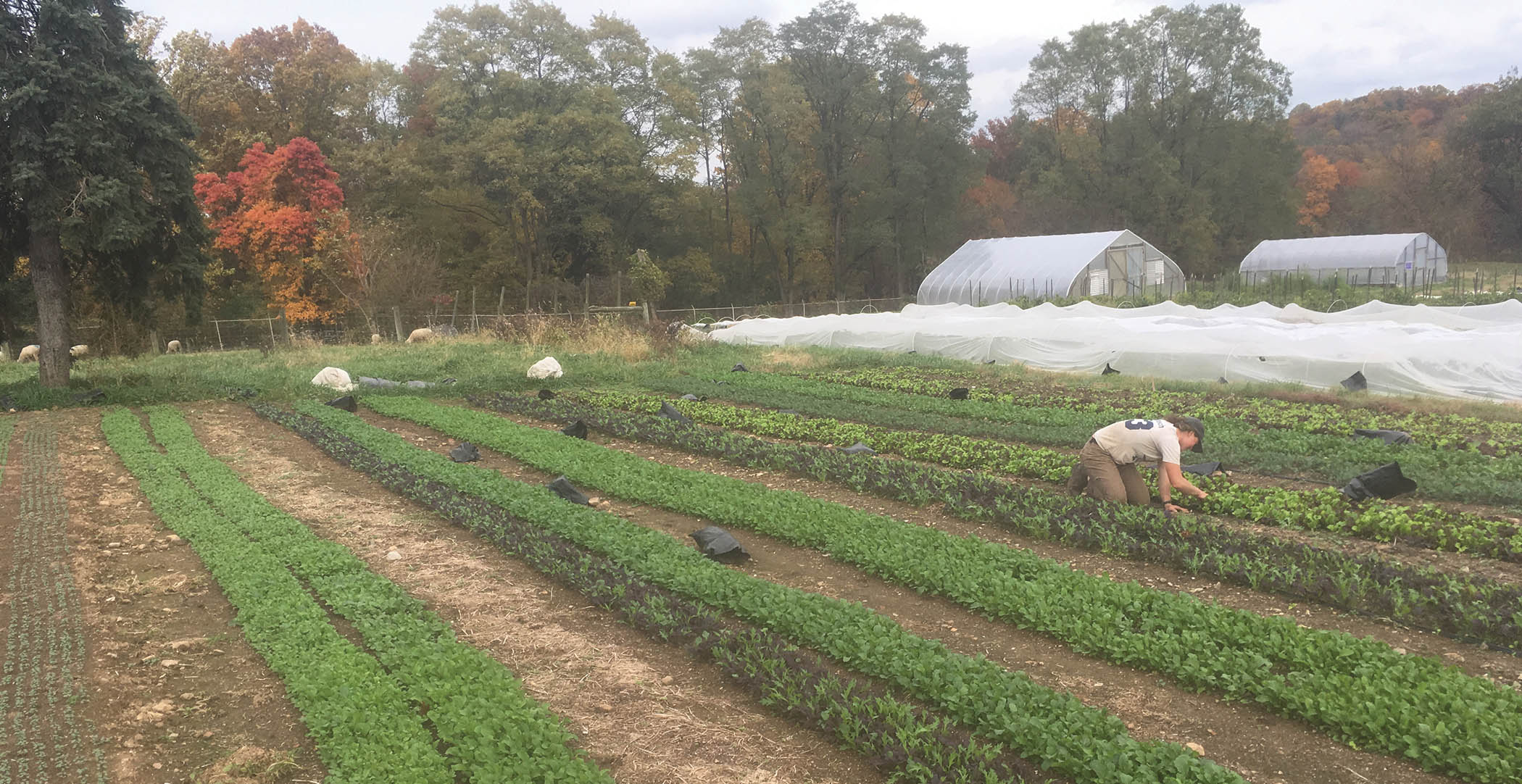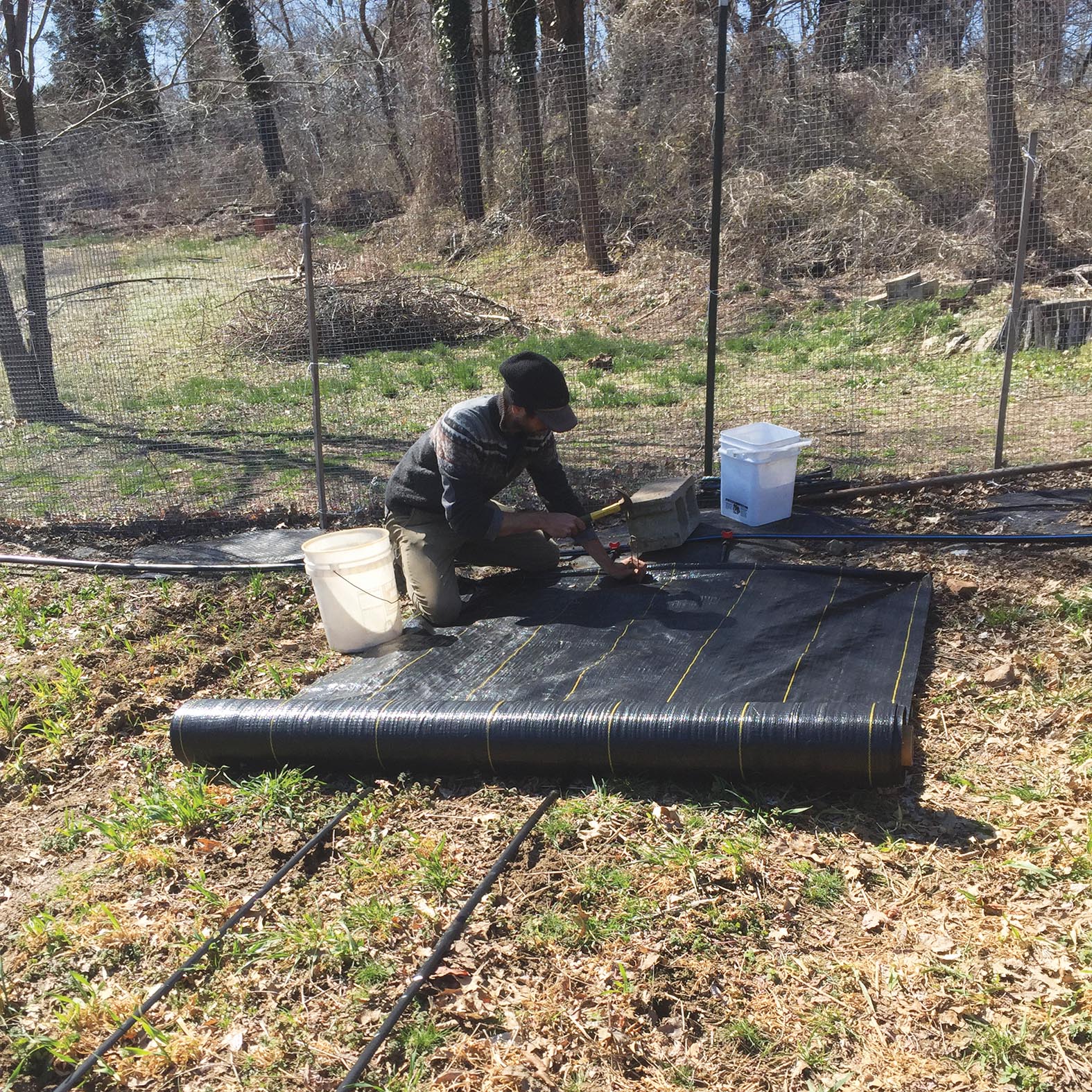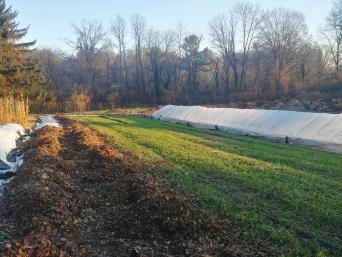
Less Toil, Better Soil: Embracing No Till Practices at Our Farms


Landscape fabric is one way to help keep weed pressure down on the farm. Transplants are planted in holes that we burn through the fabric. The fabric lets some water and air through, but limited light and it is a physical barrier to weeds growing. Landscape fabric can be reused year after year, as opposed to similar but more disposable plastic mulches.
Weavers Way Farms started going “no till” at the end of 2017. What does that mean? No till agriculture can more easily be defined by first explaining “tilling” — agitating the soil in preparation for planting. In the strict sense of the word, tilling is performed with a rototiller, but more broadly, tillage can be performed by other tools such as ploughs or discs. Human-powered tillage is possible with basic tools like a shovel or hoe, but most farmers tend to think of tilling as a more mechanized action. Tilling is typically used to knock down weeds, incorporate organic material, and create a fluffy, soft bed into which seeds and seedlings can be easily planted.
So no till agriculture means growing food without disturbing the soil, or at least with minimal disturbance. There is a lot of grey area here. Some farmers are “low till,” meaning they till less frequently. There are also degrees of tillage; for example, a rototiller will cause more disturbance than a spader. Some large-scale farms are no till, but they still use tractors to mow, crimp, and drill into the soil. Other conventional farms are no till but use herbicides to kill weeds rather than mechanically disturbing them.
Why is no till good for the soil?
Because that is what nature does. Productive ecosystems all around us grow plants and yield food in forests and meadows without tillage. Well, the soil in a forest is actually tilled — the tillage is just happening slowly thanks to diligent worms and insects. From a farmer’s perspective, no till is good because it builds soil resilience by preserving soil structure. Soil that has more structure holds more moisture during a drought. It won’t wash away as easily when there is too much rain. It’s home to more soil biota, and biodiversity equals resilience.
But the soil-related topic that I get most excited about in the context of no till is weeds. Given the billions of seeds that are in the soil, the network of weed roots, not to mention all the new seeds that are blowing into the farm, compared with the number of hours in the day, we will never be able to pull all the weeds before they go to seed and drop even more weed seeds back into the soil. So our approach to weeds now involves mulching and reducing the amount of weed seed we bring to the surface of the soil by disturbing the soil less. Do we still have lots of weeds on our farms? Sure do! Ask any cooperator who has dutifully pulled weeds for their entire cooperator shift this summer. But we are seeing progress.
To see no till agriculture firsthand, make some time this fall to visit our farms. We’ll also need help with spreading leaf mulch on our beds, which has become a huge part of our no till system. Keep an eye out for farm shifts on the Co-op’s Work Calendar as well as requests for volunteer help in November and December in the eNews.

